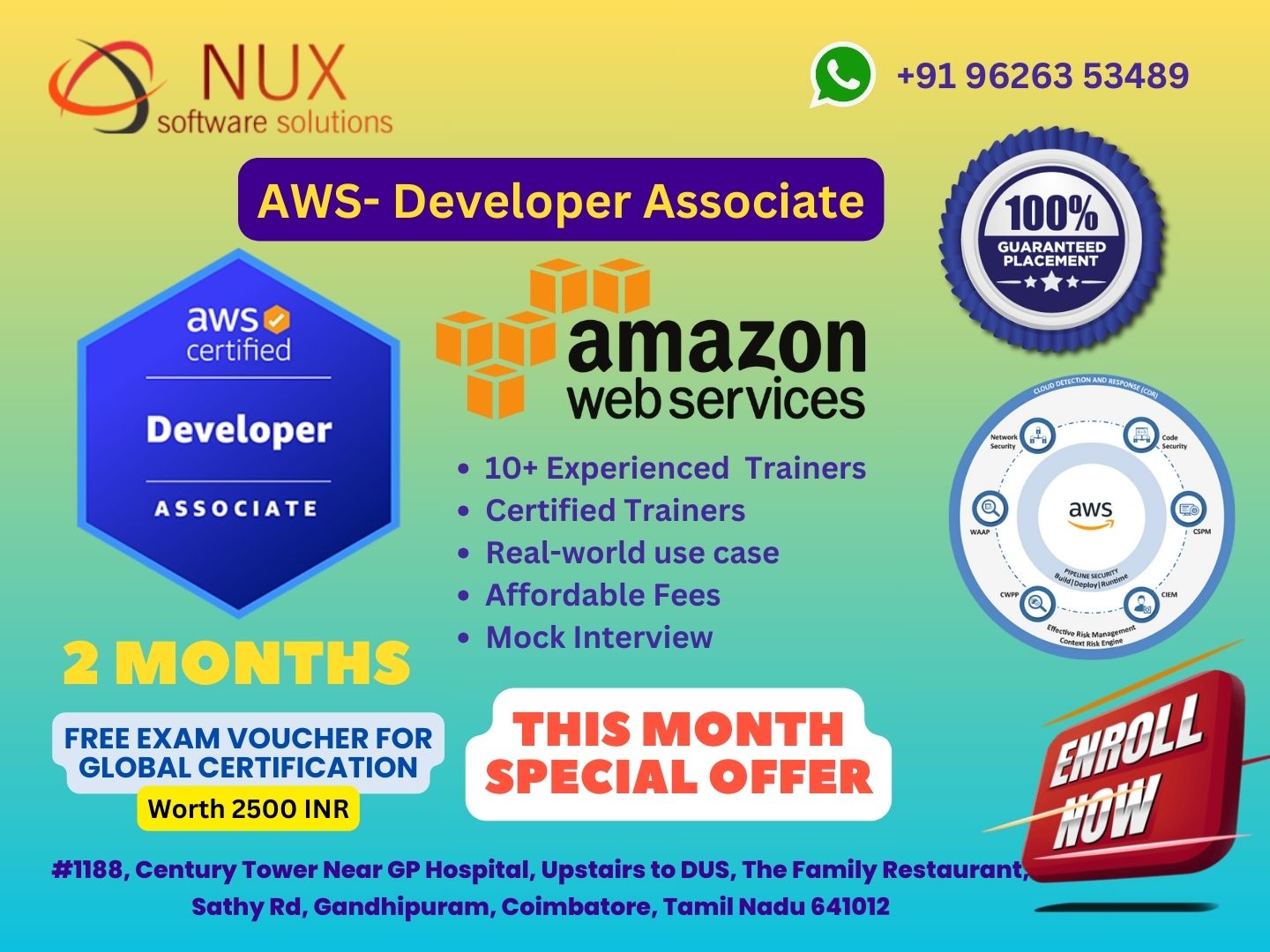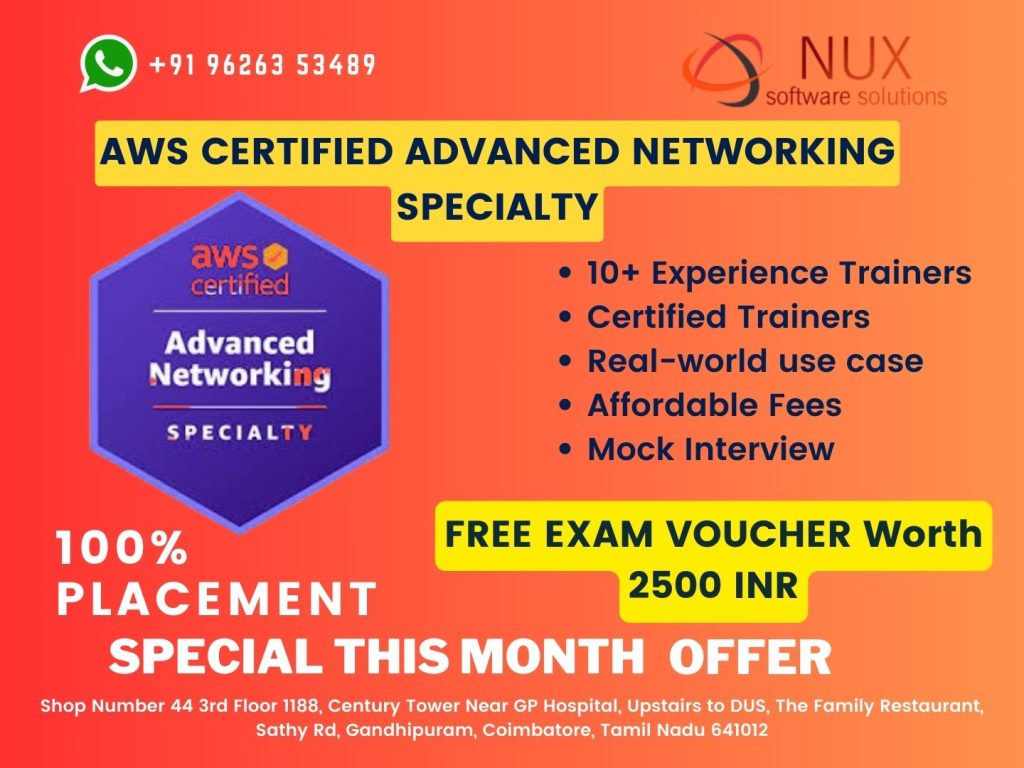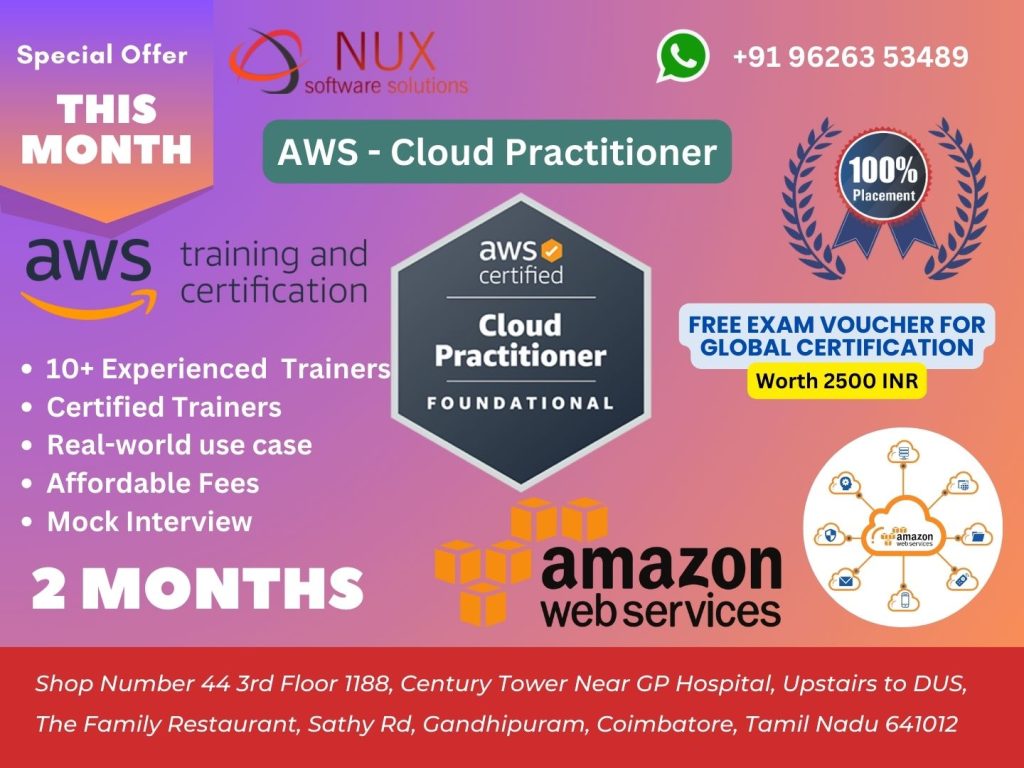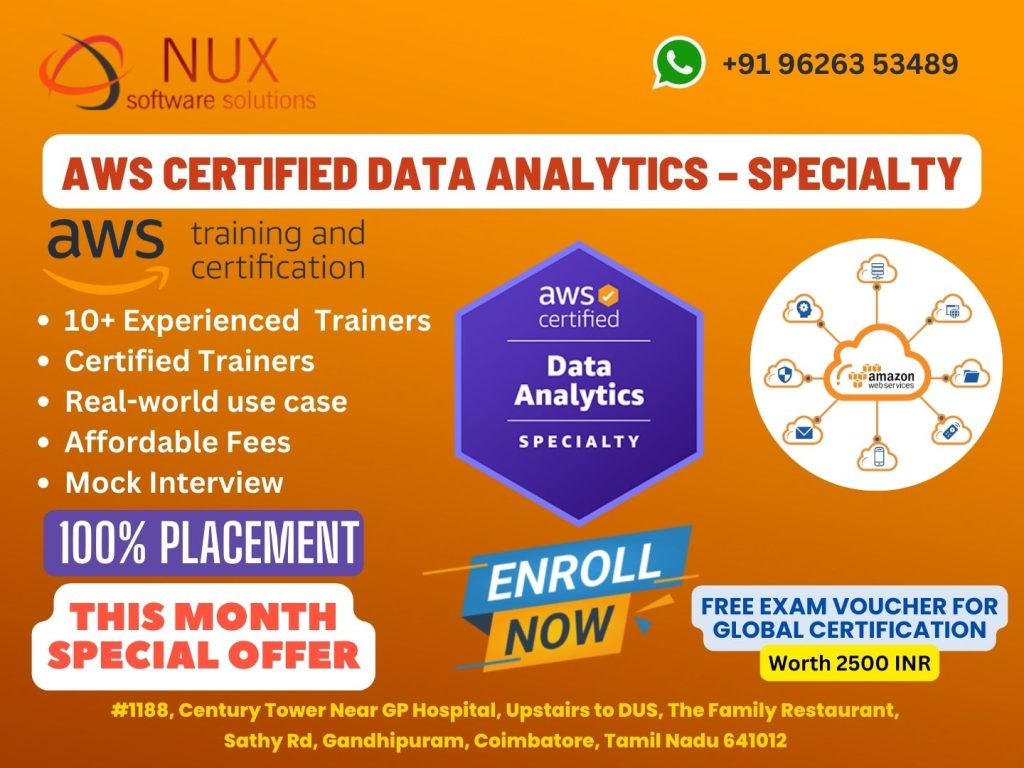Develop code for applications hosted on AWS.
Architectural patterns (for example, event-driven, microservices, monolithic, choreography, orchestration,
fanout)
Idempotency
Differences between stateful and stateless concepts
Differences between tightly coupled and loosely coupled components
Beginners Guide to IAM, Introduction to AWS Identity and Access Management (IAM), IAM 101 Summary
Develop code for AWS Lambda.
Knowledge of:
Event source mapping
Stateless applications
Unit testing
Event-driven architecture
Scalability
The access of private resources in VPCs from Lambda code
Beginners Guide to EC, Introducing EC2, EC2 Pricing Options, Exploring EC2 Instance Types, Launching An EC2
Instance - Demo, Understanding EBS Volumes, Creating An EBS Volume - Demo, How To Use Putty (Windows Users
Only), Elastic Load Balancer, Route 53 Lab, CLI Demo Lab, EC2 with S3 Role Lab, RDS 101, RDS Lab, RDS
Multi-AZ and Read Replicas, Elasticache 101
Systems Manager Parameter Store, EC2 Summary
Use data stores in application development.
Relational and non-relational databases
Create, read, update, and delete (CRUD) operations
High-cardinality partition keys for balanced partition access
Cloud storage options (for example, file, object, databases)
Database consistency models (for example, strongly consistent, eventually consistent)
Differences between query and scan operations
Amazon DynamoDB keys and indexing
Caching strategies (for example, write-through, read-through, lazy loading, TTL)
Amazon S3 tiers and lifecycle management Differences between ephemeral and persistent data storage patterns
S3, S3 101, S3 Security, S3 Policies, S3 Encryption, Set Up Encryption On an S3 Bucket, CORS Configuration
Lab, CloudFront, CloudFront Lab, S3 Performance Optimization, S3 Performance Update, S3 Summary
Implement authentication and/or authorization for applications and AWS services.
Knowledge of:
Identity federation (for example, Security Assertion Markup Language [SAML], OpenID Connect [OIDC], Amazon Cognito)
Bearer tokens (for example, JSON Web Token [JWT], OAuth, AWS Security Token Service [AWS STS])
The comparison of user pools and identity pools in Amazon Cognito
Resource-based policies, service policies, and principal policies
Role-based access control (RBAC)
Application authorization that uses ACLs
The principle of least privilege
Differences between AWS managed policies and customer-managed policies
Identity and access management (IAM)
Introduction to Serverless Computing, Serverless 101, Lambda, API Gateway, Building A Serverless Website -
Demo, Version Control with Lambda, Make an Alexa Skill Lab, Step Functions, X-Ray, Advanced API Gateway,
Serverless Summary
Implement encryption by using AWS services
Knowledge of:
Encryption at rest and in transit
Certificate management (for example, AWS Certificate Manager Private Certificate Authority)
Key protection (for example, key rotation)
Differences between client-side encryption and server-side encryption
Differences between AWS managed and customer-managed AWS Key Management Service (AWS KMS) keys
DynamoDB, Introduction to DynamoDB, Creating a DynamoDB Table Lab, Indexes Deepdive, HANDS-ON LAB AWS
DynamoDB in the Console - Creating Tables, Items, and Indexes, Scan vs Query API Call, DynamoDB Provisioned
Throughput, DynamoDB On-Demand Capacity, DynamoDB Accelerator (DAX), ElastiCache, DynamoDB Transactions,
DynamoDB TTL, DynamoDB Streams, Provisioned Throughput Exceeded & Exponential Backoff, DynamoDB Summary
Manage sensitive data in application code.
Knowledge of:
Data classification (for example, personally identifiable information [PII], protected health information [PHI])
Environment variables
Secrets management (for example, AWS Secrets Manager, AWS Systems Manager Parameter Store)
Secure credential handling
KMS and Encryption on AWS, KMS 101, Creating A CMK - Demo, Understanding KMS API Calls - Demo, Exploring
Envelope Encryption, KMS Summary
Prepare application artifacts to be deployed to AWS.
Knowledge of:
Ways to access application configuration data (for example, AWS AppConfig, Secrets Manager, Parameter Store)
Lambda deployment packaging, layers, and configuration options
Git-based version control tools (for example, Git, AWS CodeCommit)
Container images
Other AWS Services, SQS, Understanding SQS Queue Types, SQS Settings, SQS Delay Queues & Large Messages,
Simple Notification Service, SES vs SNS, Kinesis 101, Setting Up A Kinesis Data Stream - Demo, Kinesis
Shards & Consumers, Introducing Elastic Beanstalk, Deploying An Application With Elastic Beanstalk - Demo,
Updating Elastic Beanstalk, Updating An Application In Elastic Beanstalk - Demo, Advanced Elastic Beanstalk,
RDS & Elastic Beanstalk, Other AWS Services Summary - Part 1, Other AWS Services Summary - Part 2
Test applications in development environments.
Knowledge of:
Features in AWS services that perform application deployment
Integration testing that uses mock endpoints
Lambda versions and aliases
Developer Theory, What is CI/CD?, CodeCommit 101, CodeCommit Lab, HANDS-ON LAB Configure and Work with
CodeCommit from the CLI, CodeDeploy 101, The CodeDeploy AppSpec File
CodeDeploy Lifecycle Event Hooks, CodeDeploy Lab, CodePipeline 101, CodePipeline Lab, HANDS-ON LAB Setting
Up an AWS CodePipeline with a Manual Approval, Elastic Container Service,
Docker and CodeBuild Lab 1, Docker and CodeBuild Lab 2, Docker and CodeBuild Lab Summary and Exam Tips,
CloudFormation, CloudFormation Lab, Serverless Application Model (SAM), CloudFormation & SAM Lab,
CloudFormation Nested Stacks, HANDS-ON LAB Working with CloudFormation Nested Stacks, Developer Theory
Summary
Automate deployment testing.
Knowledge of:API Gateway stages
Branches and actions in the continuous integration and continuous delivery (CI/CD) workflow
Automated software testing (for example, unit testing, mock testing)
Advanced IAM, Web Identity Federation, Cognito User Pools, Cognito Lab, Inline Policies vs Managed Policies
vs Custom Policies, STS AssumeRoleWithWebIdentity, Configuring Cross Account Access - Demo, Advanced IAM
Summary
Deploy code by using AWS CI/CD services.
Knowledge of:
Git-based version control tools (for example, Git, AWS CodeCommit)
Manual and automated approvals in AWS CodePipeline
Access application configurations from AWS AppConfig and Secrets Manager
CI/CD workflows that use AWS services
Application deployment that uses AWS services and tools (for example, CloudFormation, AWS Cloud Development Kit [AWS CDK], AWS SAM, AWS CodeArtifact, Copilot, Amplify, Lambda)
Lambda deployment packaging options
API Gateway stages and custom domains
Deployment strategies (for example, canary, blue/green, rolling)
Monitoring, Introduction To CloudWatch, CloudWatch Lab, CloudWatch Vs CloudTrail
Optimize applications by using AWS services and features.
Knowledge of:Caching
Concurrency
Messaging services (for example, Amazon Simple Queue Service [Amazon SQS], Amazon Simple Notification Service [Amazon SNS])
Updates Based On Student Feedback, Introduction, CLI Pagination, IAM Policy Simulator, Lambda Concurrent
Executions Limit, Lambda Versions, Lambda & VPC Access, X-Ray Configuration, Docker & Elastic Beanstalk,
Additional Resources, Chapter Summary




